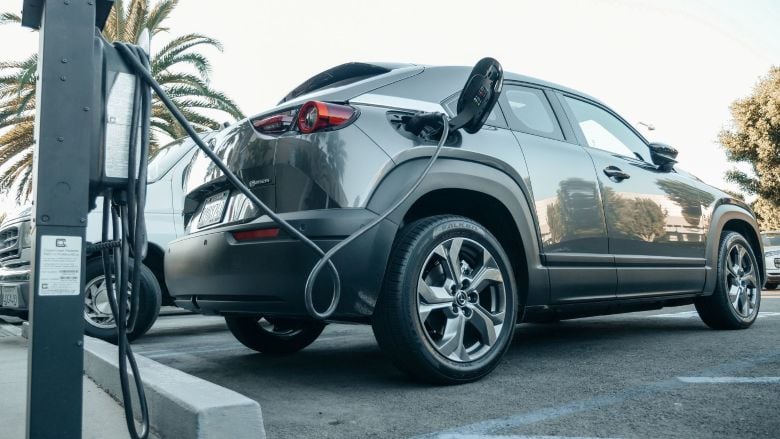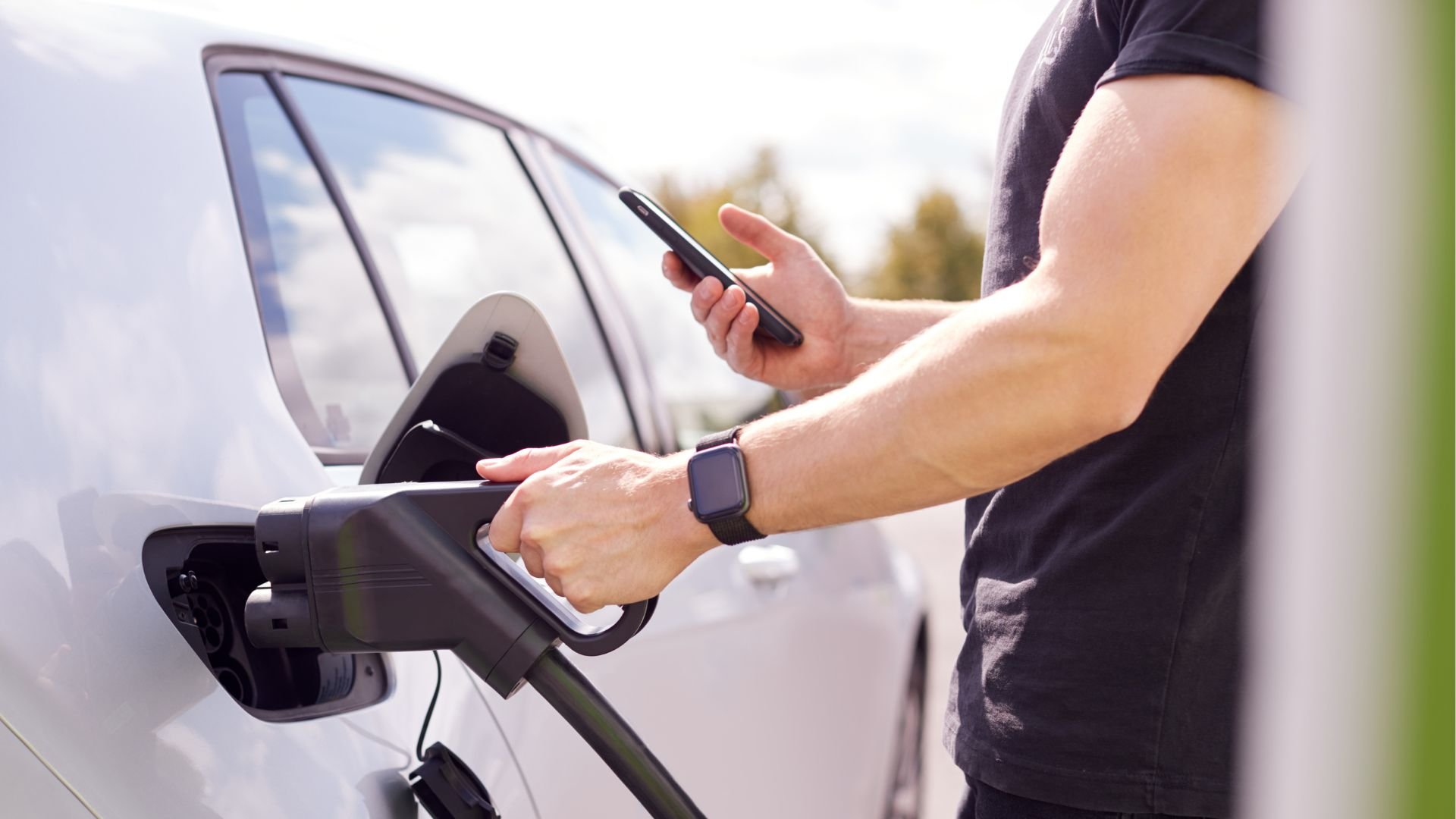
Essential Tips for Planning an EV Road Trip
- PEAK Squad
- PEAK
- March 25, 2025
There's never been a better time to hit the open road in an electric car, and this EV road trip planner covers all your essential prep.
Early generations of electric vehicles (EVs) weren't really built for long-distance road trips. In 2015, the median range of an EV battery was just 90 miles. Charging station infrastructure was spotty, and EVs were largely limited to local use.
That's all changed. EV batteries took a huge leap forward in 2016, when their median range soared by 242% over the previous year to reach 218 miles. Then, in 2021, the federal government rolled out the National Electric Vehicle Infrastructure (NEVI) program, which led to dramatic improvements in charging station coverage.
Today, the longest-range EVs on the U.S. market can go more than 500 miles on a single charge and the median EV range has climbed to 270 miles. Charging stations are everywhere, and they're easy to find and use. There's never been a better time to hit the open road in an electric car, and this EV road trip planner covers all your essential prep.


Plan your routes
Route planning is extra important for electric vehicle road trips. Range anxiety is real, and you don't want to find yourself stuck in a remote or unfamiliar place with a low or dead battery.
The key here is to plan your routes around charging station availability. The U.S. Department of Energy maintains an up-to-date map of charging station locations throughout the United States and Canada. Popular navigation tools like Google Maps can also guide you to charging stations, as detailed in this Google explainer.
Extend your range
Even though charging station coverage has dramatically improved, it's smart to do what you can to extend your EV battery range. Start with this guide to increasing fuel efficiency — it mainly applies to drivers of gas-powered vehicles, but many of the tips will also boost your battery range. These include:
- Avoiding unnecessary acceleration and braking
- Driving at smooth, constant speeds
- Keeping your speed under 60 miles per hour whenever possible
Getting rid of unnecessary weight will also extend your battery range. For example, if you have a roof rack you aren't going to use, remove it before your trip. If you need extra storage space, an aerodynamic and lightweight cargo trailer is a better option.
Terrain and weather can also impact your EV's range. Your battery will drain faster if you're climbing a lot of steep hills or driving in the mountains. High winds, extreme heat, and extreme cold can also affect your battery — especially if you’re blasting your AC or heater.
Here's how to deal with these issues:
- Keep a close eye on your remaining range if you're navigating hills or mountains, since it will likely deplete faster than you might otherwise expect.
- Use specialized navigation apps like A Better Route Planner or PlugShare to integrate EV charging station access with the sights you want to see along the way.
- Understand how extreme temperatures affect your battery range. Cold weather can cause range losses of about 10% to 36%. According to the American Automobile Association (AAA), heat above 95 degrees Fahrenheit (35 degrees Celsius) can reduce efficiency by 4%.
Continuously running your heat or air conditioning will deplete your battery range even more. Use your climate controls strategically, especially if you're in a remote location.
When using your heater, avoid the highest temperature settings. They drain more energy, and they won't heat up your car any faster. You should also run your heater as gently as you can without sacrificing your comfort.
For air conditioning, wait until your car is moving before you turn it on: this improves your compressor's operating efficiency. As with heat, keep your A/C at the lowest possible level, and avoid heat gain by parking in the shade whenever possible.
When driving in hilly, windy, or extremely hot or cold conditions, it's extra important to always know where the nearest charging station is. To be extra safe, head for a charge when your battery dips below about 30%.


Accelerate your EV charging speed
Charging speeds can have a major impact on your EV road trip. Depending on your vehicle's on-board technology, battery type, and the kind of charger you use, it can take anywhere from about 20 minutes to eight-plus hours to put an 80% charge on a nearly drained battery.
ChargeFinder, which is available as a desktop website and a mobile app, can help you find the closest high-speed charging station. The service offers global coverage, making it a useful companion no matter where you're headed.
You can also use these tips and best practices to optimize your charging speeds:
- Your battery will charge faster when you start charging at a low level. Aim to start your charge when you reach the 20% threshold.
- Choose hotels and homestays with on-site EV charging ports so you can juice up your car while you rest or sleep.
- If possible, use an indoor charging station in the winter. Charging tends to take longer in the cold.
Finally, remember that you don't necessarily have to use a public charging station to power up. The PlugShare app can help you find locals willing to share their home chargers with visitors. You can use the opportunity to round up some insider tips on what to see, what to do, and where to eat while you're visiting the area.


EV road trip vehicle prep
Before you hit the road, you should always perform a complete vehicle inspection — even if your EV is relatively new. Assess your:
- Tire treads, tire pressure, and air levels
- Wiper blades
- Headlights, taillights, reverse lights, and turn signals
- Battery function
You can have a technician perform the inspection, or do it yourself. If you opt for the DIY route, our ultimate road trip checklist explains how to check and service your tires and battery.
If your wiper blades are more than six months old, you should probably replace them with new ones. Here’s everything you need to know about removing and replacing windshield wipers.
Upgrading your headlights is a wise idea if you're going to be doing a lot of low-visibility or nighttime driving. Consult our resource for choosing and changing headlights bulbs for helpful shopping and installation tips.
Next, check your fluid levels and address any deficiencies you find. Remember that EVs use a slightly different set of fluids than traditional gas-powered vehicles.
EVs do use these fluids:
- Antifreeze coolant
- Transmission fluid
- Brake fluid
- Windshield wash
They don't use these fluids:
- Engine oil
- Power steering fluid
For complete details on how to perform EV fluid checks, use our spring car maintenance checklist. It covers every fluid your electric vehicle uses.
Last but certainly not least, remember to pack a well-stocked emergency kit. Our ultimate road trip checklist has a complete list of essential items.
Plan a better EV road trip with PEAK
Make PEAK a part of your electric vehicle road trip: from windshield wash and wiper blades to antifreeze coolant and exterior lighting, PEAK delivers premium performance with every product.
Get ready for your EV road trip with:
- Original Equipment Technology Antifreeze + Coolant
- Bright and brilliant Power Vision Xenon headlights
- Durable and powerful Silicone Platinum wiper blades
- PEAK De-Icer anti-frost or PEAK Bug Cleaner windshield wash for strong seasonal performance
Stay safe, have fun, and make memories!

